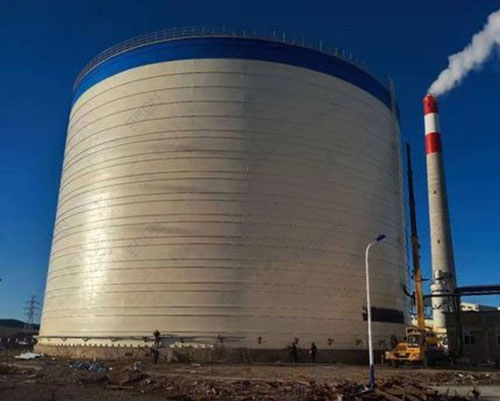7. Wide usage: the large steel silo can not only be used for cement and fly ash storage, but also can store chemical raw materials, grain, feed, etc.
Precautions When Using Fly Ash Steel Silo
(1)Before feeding, the Roots blower and the dust collector on the top of the silo should be turned on to supply air to the silo to circulate the air to dry the fluidized rod breathable fabric, and at the same time, it can take away the moisture in the silo to prevent the material from being damp and hardened at the bottom of the steel silo.
(2)Before feeding, check whether the valve of the inflatable pipeline is flexible and whether the switch state meets the process requirements; the inflatable pipeline should be purged to ensure that there are no welding slag and other debris; all garbage in the silo and in the material guide pipe should be cleaned up.
(3)Make sure that the dust collector on the top of the silo is turned on when feeding materials. Before starting the dust collector on the top of the silo, check the breathing valve on the top of the silo to ensure that the fan of the dust collector can be turned on when it is unblocked, so as to prevent the silo from being sucked and deformed.
(4)In order to ensure the normal operation of the steel silo, the moisture content of the incoming materials should be strictly controlled not to exceed 0.8% during production and operation. If the moisture content is greater than 1.0%, the fluidity of the material will be seriously reduced, which will affect the normal use of the steel silo.
(5)Strictly prevent rainwater from seeping into the conveying equipment such as elevators and chutes, and storage silo, so as to avoid the formation of large wet material groups and affect the discharge. At the same time, it should be strictly prevented from being mixed with sundries during the feeding process, which will affect the unloading and discharging.
(6)After the discharge is normal, if the storage time is long, the material discharge cycle should be carried out regularly to avoid the dense accumulation of materials in the steel silo.

.jpg)

.jpg)
